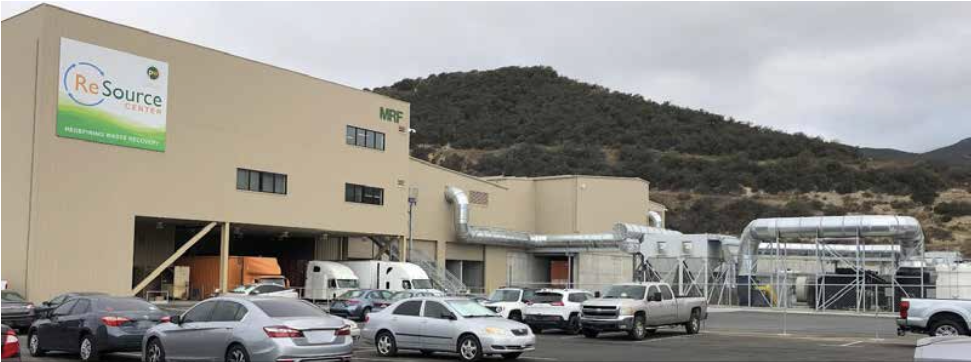What a Waste
Flaws at Tajiguas Must Be Examined Independently

Santa Barbara County recently terminated its agreement with Mustang Santa Barbara (MSB), the developer and operator of the ReSource Center at Tajiguas Landfill. At a price tag of $155 million to build, it is one of the costliest facilities of its kind in California, if not in the country. The community deserves to know whether the ReSource Center is dealing with fundamental flaws.
The facility was originally pitched to the participating cities of Santa Barbara, Goleta, and Buellton as a means for meeting state solid-waste and recycling mandates and to obtain a state permit to expand the landfill.
Since it began operating in July 2021, the ReSource Center has been plagued with problems. The most glaring one is offensive odors from the composting operation that invade the residential enclave of Arroyo Quemada, located downwind of Tajiguas. Colleagues of mine in the waste management industry who know the ReSource Center say that that there are fundamental technical problems with the digester system that will likely require significant further investment to correct.

From the beginning, it was clear to industry experts and concerned citizens that Santa Barbara County was taking a big risk with Mustang and its project approach. The company had no previous experience with the components of the ReSource Center.
At the time, the Community Environmental Council, drawing on its waste management and recycling experience and input from waste industry experts, was among those that expressed concerns. The idea of creating a recycling facility 27 miles up the coast (to be operated by MarBorg Industries) made no sense. Recovered recyclables would have to be shipped to the Port of Los Angeles, resulting in unnecessary transportation costs and attendant environmental impacts. Furthermore, the ReSource Center was predicated on taking South Coast mixed waste to Tajiguas and then separating out the organics with expensive sorting equipment to remove contaminants. This practice has run into trouble for years. The resulting compost from the process is very low quality and a marginal agricultural asset at best.
It’s worth mentioning that Santa Barbara County, years before the ReSource Center was conceived, had issued several requests for proposals (RFPs) for technology to enhance recycling at Tajiguas. These RFPs proved to be false starts. The county gained a reputation among top-tier waste management firms as a local government that didn’t know what it wanted.
When Mustang proposed an entirely privately financed facility, it must have seemed like an entic- ing prospect to the Public Works Department. But this “private financing” offer was short-lived. Project costs kept mounting, to the point where Mustang sought and received public bond financing.
Today, with the relationship between Mustang and the county now severed, the question before Santa Barbara County and the cities of Santa Barbara, Goleta, and Buellton is: What to do about the ReSource Center?
The current situation demands that the Public Works Department make a full accounting of the ReSource Center’s status:
- What are the recycling rates for organic and non-organic recyclables and how do these compare with the contracted rates?
- What are the problems with the compost produced from mixed waste that are generating the much-publicized odor problems at the facility?
- Is the Bekon anaerobic digestion system capable of producing a non-odorous compost with modifications, and if so, what will that entail?
Even further: To what extent have potent green-house-gas-producing methane emissions been reduced as a result of the facility? Facilities such as Tajiguas are supposed to achieve 40 percent methane reductions by 2030 as part of California’s climate-change mandates. Will these problems be a factor in the county’s objective of obtaining a state permit to expand Tajiguas?
This accounting should be reviewed by an independent team of waste/recycling and compliance experts, and by representatives from the county supervisors and the Santa Barbara, Goleta, and Buellton city councils. Until such an assessment of the ReSource Center is made and a path forward defined, no long-term operating agreement with a third party should be considered.
Given what is at stake, nothing less than full transparency is warranted as the county and cities grapple with the challenges facing the ReSource Center. The road ahead isn’t going to be easy or cheap. My hope is that the facility can be made to work and not become a white elephant.
Paul Relis was founding executive director of the Community Environmental Council, oversaw California’s waste and recycling system, and pioneered anaerobic-digester development in the private sector with the company CR&R Inc.

You must be logged in to post a comment.